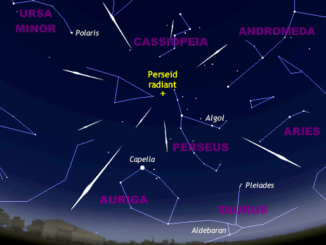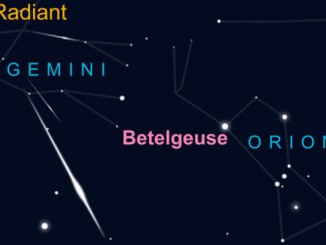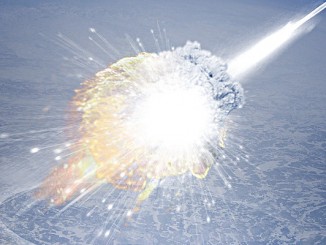
A fine Perseid meteor shower peak on 13 August despite a waxing Moon?
It’s the time of year when Northern Hemisphere skywatchers turn their attention to the Perseids, the favourite meteor shower of many an observer. The peak of the Perseids is predicted for moonset on 13 August 2019, bringing dark skies to watch these bright, fast shooting stars — the more explosive examples leaving persistent trails in the sky.








